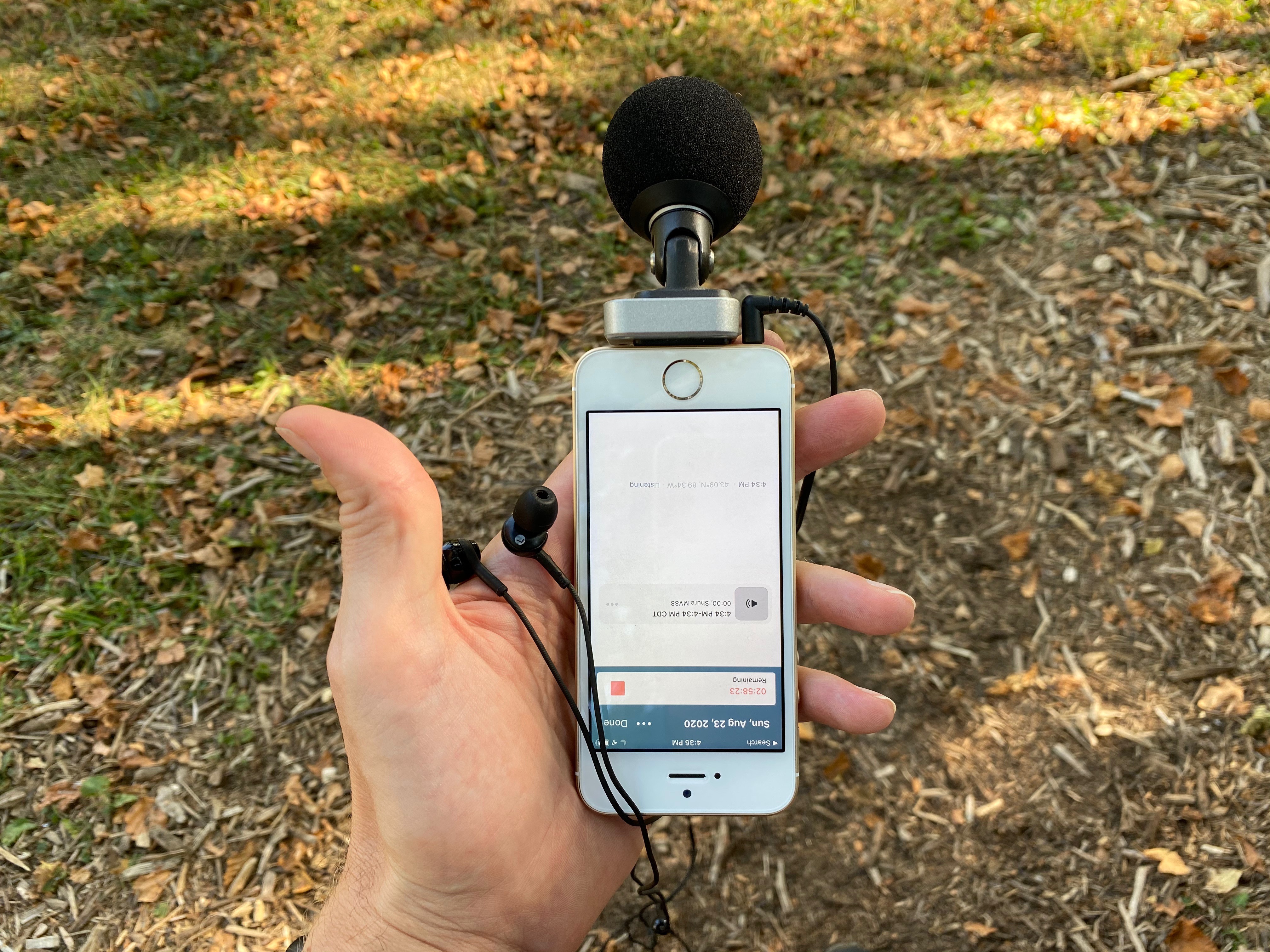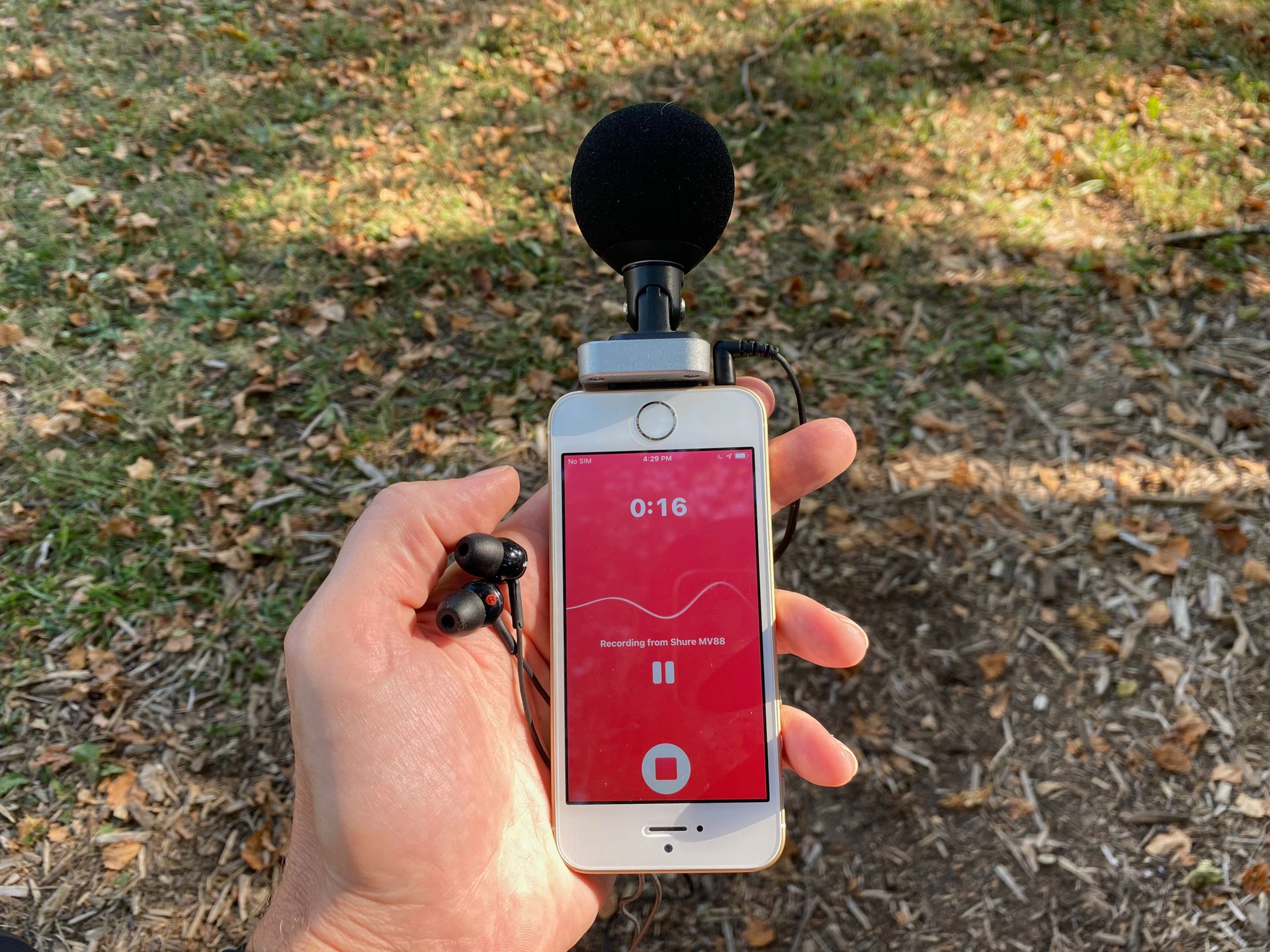In July, I took an online class on "Deconstructing the Audio Documentary," taught by Dennis Funk. It was, in a word, wonderful, and it scratched three particular itches I was feeling when I signed up: the need to carve out some time in my life dedicated to listening, the desire to connect with other people making audio, and the hope that I could reorient my thinking away from podcasts and toward audio documentaries. It is very easy for me to get sucked into the "industry" of podcasting, which also makes it easy to lose the thrill and inspiration that comes from hearing and making things I like. In essence, I wanted to reset my ears a bit.
And it worked. One of the best parts of this class for me was a very simple exercise, one that I have often assigned in classes but very rarely practiced myself: keeping a listening journal. There are a few ways to approach the assignment: some that involve quite active listening, some that involve more passive reception, ones that involve making a recording, and others that just involve a pencil and paper. In my experience, there is no wrong way to do it, as long as you find yourself listening somewhere. It's essentially a form of meditation.
But of course, as Douglas Kahn has said, "sound leads elsewhere." Like in meditation, it might lead you inward, but it might also point to something outside yourself. Sound tends to lead me to its source, with many possible levels of specificity (animal -> bird -> black-capped chickadee; engine -> motorcycle -> Harley-Davidson). But it can also lead to larger social and cultural questions. Take these sounds, which I captured this week using the built-in mic on my phone:
It's a lousy recording—some construction sounds interspersed with traffic noise—but it comes from a crew installing plywood over windows in downtown Madison the night after protests and social unrest due to an incident of police brutality. These particular sounds certainly point us elsewhere, to questions about race and equity and the value our society places on private property. In listening, I gave myself an opportunity to reflect on some of these issues outside of the context of traditional news consumption or doomscrolling.
If you want to start your own listening journal, there is really only one decision to make: if you want to make recordings or not. If you don't, then all you need is a paper and a pencil. Go somewhere, sit there for a while, and write down what you hear—a bulleted list is fine. If you want, after a set period of time, start writing prose. You can reflect on what you actually heard or you can let your mind go wherever sound led you. Like any journaling practice, prompts can help. Here's one from our class:
In a space you often spend time, close your eyes and listen to your surroundings. Write down what sounds are familiar. Make a note of what you pick up on that's new. How does hearing these new sounds change your experience?
The benefit of this approach is that it's low-tech. The downside is that you won't be able to review your recordings at a later date. Here is an example of another prompt from class:
Go somewhere new. Note what you hear while you are there. Collect about ten minutes of audio on your phone or a recorder. Listen back to the recording at a later time. Listen with headphones and write down what sounds you didn't notice.
Of course, these approaches do not have to be mutually exclusive. For my own listening journal, I've been making recordings and collecting them in the Mac and iOS journaling app Day One.

Day One can record from the built-in mic while you are in the app itself, so it's super easy to get a recording going, and as a bonus, it uses your phone's GPS to tag the location of your recording, making it easy to compare recordings from the same location or create a map of all of the places you have listened.
If you want to do it with a microphone and/or recorder, you can import your recordings into Day One later or find ways to rig up external microphones to your phone. This is a subject on which I could write more (and probably will!), but I've become a big fan of using the Shure MV88 with an old iPhone SE.

It can capture a surprisingly nice stereo field, fits in your pocket, and plugs right into your phone, allowing you to edit and save, all without touching a computer. That said, I only recommend this if you have an older phone with a headphone jack, otherwise there is no way to monitor what you're recording. Besides Day One, another app that I like with this mic is Just Press Record, which has a dead-simple interface and allows for recordings in higher quality formats, including WAV files. Plus, unlike Day One, the app is smart enough to turn the interface upside down when you are recording.

I used the Shure MV88 on August 22 to record this nighttime insect chorus. It felt like the first time I ever allowed myself to really focus on that sound, and I was surprised by what I heard, including (I think...) individuals who were doing something slightly different than the rest of their crew.
If you have questions / thoughts / ideas / stories / sounds or good prompts from your own listening journal practices, I would love to hear them.
Sounds Good
Besides this journaling inspiration, obviously a class on radio documentaries also turned me on to a ton of good radio documentaries. I'll share one this week, with more in upcoming newsletters.
🎧 Papa, We're in Syria: A sonically and thematically complex story of a German father trying to find his sons, who became radicalized and fled to Syria. It is also very technically interesting, with multiple narrators, voice actors, prominent sound design elements, and good musical choices. Also, FYI, it's in German, so the only way for English speakers to experience it is through the subtitles in the video. It's worth an hour of your focused listening!
Oh, and by the way, I love the new Taylor Swift record.
